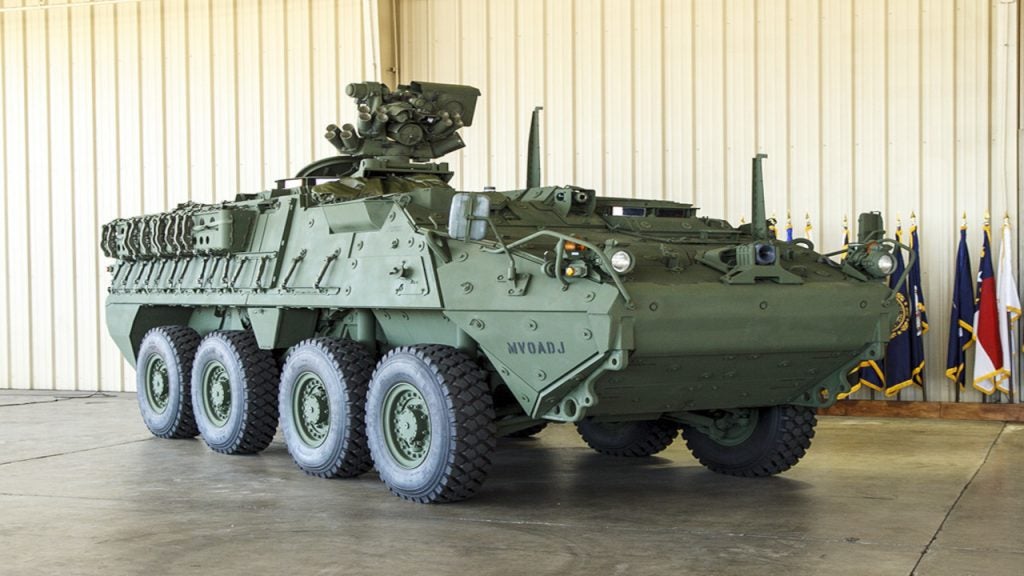
The decision by the US, French, and German governments to supply the Bradley infantry fighting vehicle (IFV), AMX 10RC wheel armoured reconnaissance vehicle, and Marder IFV respectively to Ukraine point towards Kyiv’s war against Russia moving towards a new phase in the first half of 2023, with a greater emphasis on mobile protected firepower.
That Ukraine is able to utilise the resources and financial support of NATO members and replenish or renew its stocks of munitions, small arms, artillery, and armour, runs in stark contrast to the difficulties Russia is facing in its own efforts. Moscow appears to be limited to systems already in reserve, of which it has significant but ageing stock, and niche support from countries such as Iran for loitering munitions.
How well do you really know your competitors?
Access the most comprehensive Company Profiles on the market, powered by GlobalData. Save hours of research. Gain competitive edge.

Thank you!
Your download email will arrive shortly
Not ready to buy yet? Download a free sample
We are confident about the unique quality of our Company Profiles. However, we want you to make the most beneficial decision for your business, so we offer a free sample that you can download by submitting the below form
By GlobalDataReports persist that Russia is attempting to resupply through North Korea, and other allies such as Syria, although little hard data is available to verify such claims. The US Pentagon press secretary Brig Gen Pat Ryder, speaking during a media briefing on 5 January to confirm the inclusion of Bradley in the latest US support package, stated that the US had “seen Russia’s intent to acquire artillery and ammo” from Pyongyang, although little in the way of recent developments.
Battlefield losses
As the two sides near the unwanted one-year anniversary since the initiation of large-scale combat operations in Ukraine on 24 February last year, both will have felt the impact of battlefield attrition over the past 10 months.
GlobalData analysis of open-source information compiled by Oryx indicates that Russian losses of IFVs up to 21 December 2022 amounted to 1,869 platforms, across various types. In contrast, Ukraine had lost 418 IFV in the same reporting period. A similar picture can be painted with tanks losses, with Russia and Ukraine suffering 1,585 and 426 battlefield losses respectively. Armoured fighting vehicle losses for the two sides are somewhat closer in terms of ratios, although still heavily in favour of Ukraine with 238 destroyed compared to 744 for Russia.
A spring push?
Aside from platform numbers and renewal, much of the success of planned combat operations comes down to preparation, particularly in the form of training. NATO allies, prior to the outbreak of major hostilities between Ukraine and Russia in 2022, were engaged in multiple training programmes intended to modernise and mature Ukrainian forces in light the threat posed by Russia.
Since the invasion, NATO states have embarked on a widespread programme to develop battlefield tactics and knowledge at the platoon level, as being seen with the UK’s Operation Interflex. However, any push by Ukrainian forces in the spring will require a more combined concept of operations and need to include the kinds of platforms now being provided to them by the US, France, Germany, and others.
Speaking on 5 January, Ryder stated that US military training has seen “approximately 3,100 Ukrainians” pass through a variety of courses since April, which when combined with the (predominantly UK) international training effort, saw an estimate of about 12,000 Ukrainian personnel receive a degree of NATO-standard training since hostiles against Russia were renewed.
The next stage, disclosed by Ryder, would be combined armed and joint manoeuvre training, which was likely to begin “in a couple of weeks” at sites in Germany. The US aspiration is for around 500 Ukrainian forces to be trained at the battalion level each month.
“That is going to provide them with advanced training, again, training that we had been providing before the invasion that we had to stop doing because of the invasion. But this will give them enhanced capability to operate at the battalion level and combined arms, which again, will give them an advantage on the battlefield,” Ryder detailed during the briefing.
Through the Ukraine Defence Contact Group, created in order to give Ukraine a forum in which to request equipment from supportive and NATO states, Kyiv has been able to acquire, at a cost that NATO states will want to be recovered, the right platforms for the particular stage the war was in. Indeed, the level of planning that has gone into the support for Ukraine indicates NATO taking a persistent strategic view of the war and the need for Russia to fail in its bid to overthrow the government of President Volodomyr Zelensky in Kyiv.
Given this, and the move to supply systems such as the Bradley, it appears that operations could be on the verge of moving from static frontlines and the need for massed artillery fire, to combined arms warfare that would aspire to seize the battlefield initiative. Given the training pipeline, and platform delivery times, it could take several weeks, if not some months, for all equipment to be provided to Kyiv, along with qualified personnel.
“Things like the Bradleys, things like the Patriot [air defence system], which are complex systems, are going to require a training and an operations tail. Clearly, we’re at a point in this battle where we’re going to be able to provide that kind of training, to enable Ukraine to sustain those kinds of systems, so that they can focus on defending their country and taking back territory,” Ryder said. “Early in this campaign, when Russia was on the doorstep of Kyiv, [it was] a much different situation. Things like long-term sustainment and logistics would be a much more complex undertaking.”
Data visualisations by Saywah Mahmood, Mengying Du, and Giacomo Boscaini-Gilroy.








